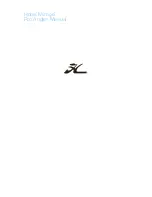
9
Always adjust your speed to the conditions and to the environment. Take into account the
following:
-
waves (also consult the passengers about a comfortable speed)
-
your boat's wash (biggest when starting to plane, smallest when travelling at
displacement speed or at less than 5 kn)
-
visibility (islands, fog, rain, driving against the sun)
-
familiarity with the route ( time needed for navigation)
-
narrowness of the route (other traffic, noise and wash at shore)
When running at low speed, a planing boat's directional stability is poorer than at higher
speed. So be careful in narrow passages and when meeting other boats.
The running position of the boat greatly affects the driving qualities and fuel consumption. The
boat's best operational position may be achieved by:
-
proper placing of the load. A rule of thumb: keep bow as light as possible.
-
adjusting the engine's trim angle
The combination of the right operational position with the right speed also make driving in
rough water more comfortable and safer.
WARNING! Sudden steering movements at high speed may cause loss of control and great
heeling angles in a high sea.
3.7 APPROACHING THE DOCK
Practise boat manoeuvring skills needed when approaching a dock. Choose a wide space
before entering a crowded marina.
A very gentle throttle application does not generate sufficient steering power. Sharp but short
throttle applications enable efficient steering movements.
See to it that everyone on board who does not have to stand up is seated when you are
approaching the dock. Sudden steering movements may cause the boat to sway and
someone to get injured.
Before docking, prepare the ropes at stern and bow. Approach the dock bow first at a narrow
angle. Just before touching the dock, steer against the dock and shift into reverse. Apply
throttle quickly and sharply. The boat will stop and turn parallel to the dock. If possible, make
the approach into the wind or current, whichever is the strongest, because departure from the
dock is easier when the wind or current pushes the boat from the dock. The easiest way to
depart is by first pushing the stern as far away from the dock as possible. Then slowly reverse
clear of the dock, shift into forward and proceed slowly.
If the wind or current is pushing the boat away from the dock, push the vessel away manually
and slowly drive forward into open water before starting to make a sharp turn. If you turn the
boat too sharply at the dock, the motor may hit the dock or other boats.
The propeller is designed to give its best grip in forward gear. Therefore the propeller
performance is weaker in reverse. Neither does the boat have a similar steering response in
reverse as in forward gear.











































